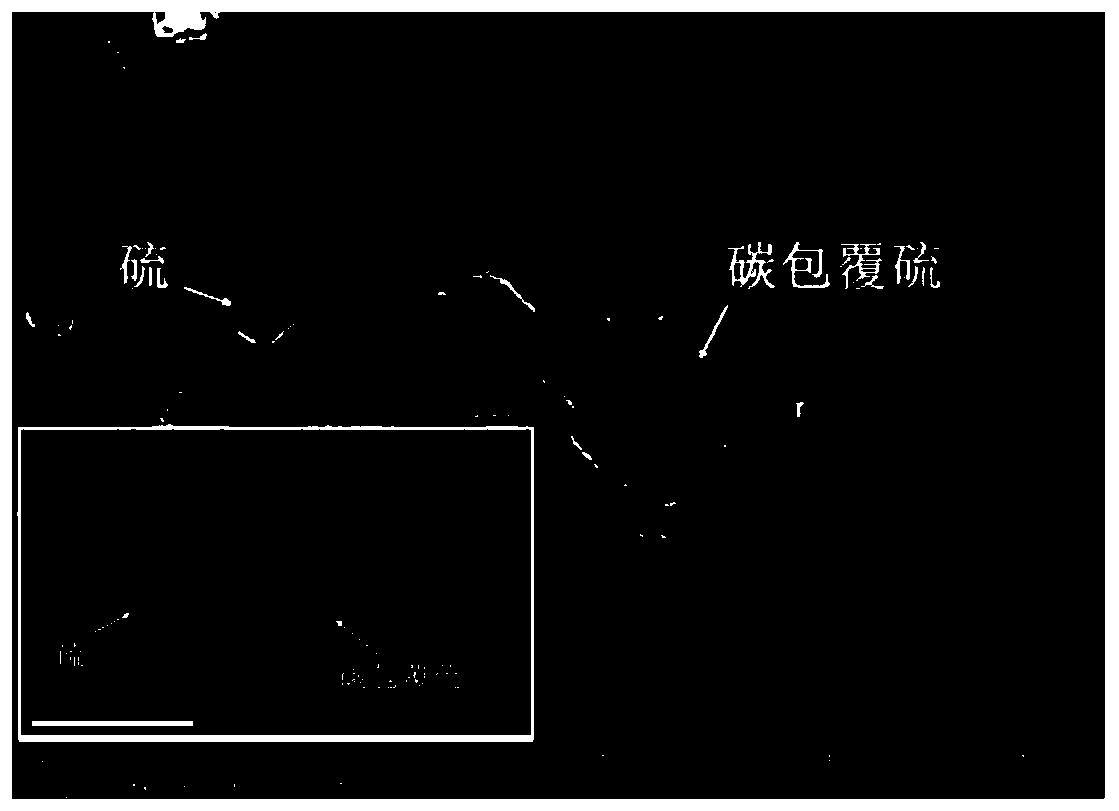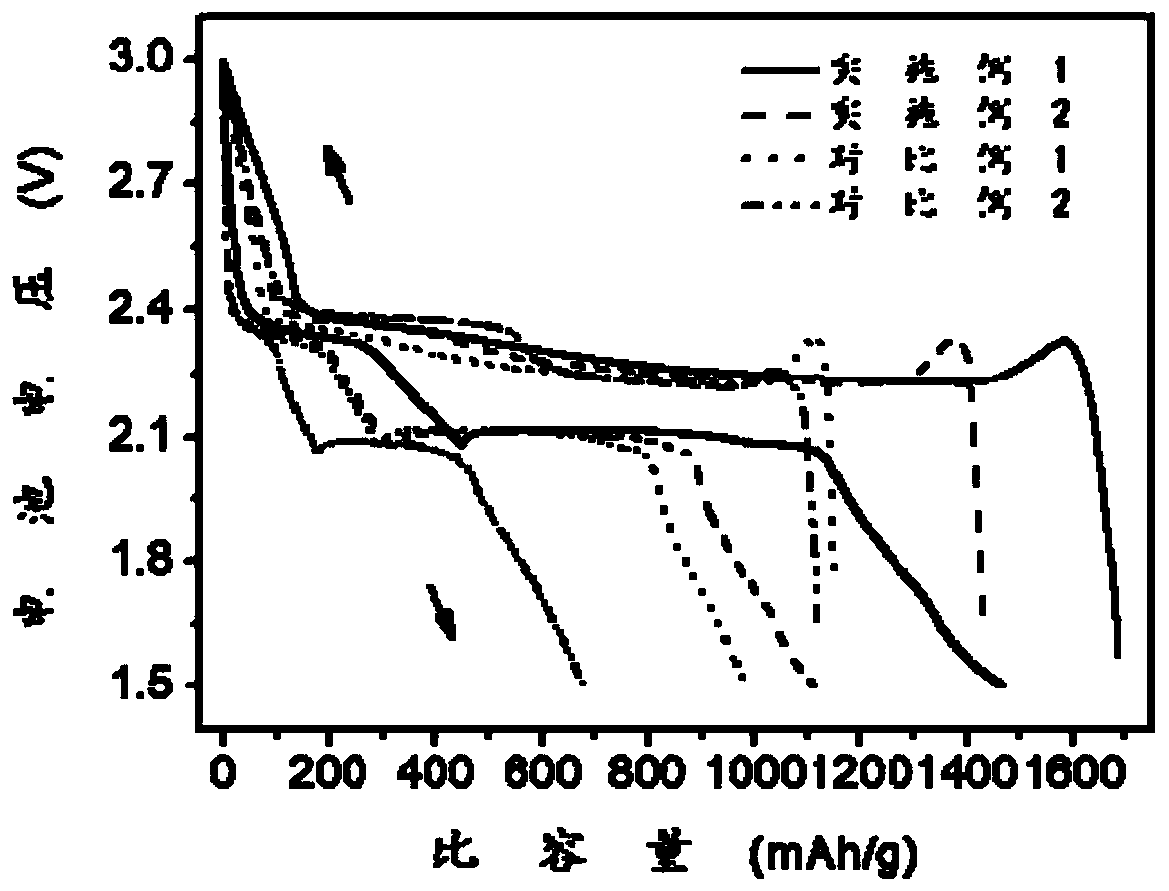Preparation method of high-stability composite positive electrode material for lithium-sulfur battery
A composite positive electrode material and lithium-sulfur battery technology, which is applied in the field of energy storage, can solve the problems of poor cycle stability, low conductivity, and low capacity utilization rate, and achieve the effects of reducing agglomeration, improving utilization rate, and improving cycle stability
- Summary
- Abstract
- Description
- Claims
- Application Information
AI Technical Summary
Problems solved by technology
Method used
Image
Examples
preparation example Construction
[0040] The preparation method of the present invention will be further described in detail in conjunction with specific examples below. It should be understood that the following examples are only for illustrating and explaining the present invention, and should not be construed as limiting the protection scope of the present invention. All technologies realized based on the above contents of the present invention are covered within the scope of protection intended by the present invention.
[0041] The experimental methods used in the following examples are conventional methods unless otherwise specified; the reagents and materials used in the following examples can be obtained from commercial sources unless otherwise specified.
Embodiment 1
[0043] Step 1: Mechanically mix the elemental sulfur powder and Ketjen black according to the mass ratio of 1:0.1 and then add it to the airflow mixer. The BET specific surface area of Ketjen black is 1300m 2 / g, the particle size distribution D was prepared by mixing 50Ketjen black-coated sulfur composite material with a thickness of 50 μm;
[0044] Step 2: fluorinated carbon black (fluorocarbon ratio 0.3, BET specific surface area 200m 2 / g) and polyethylene glycol are ultrasonically dispersed in an aqueous solution at a mass ratio of 1:0.1, subjected to a hydrothermal reaction treatment at 160°C for 20 hours, and the reaction product is suction-filtered, washed, and dried to obtain a carbon-coated carbon fluoride material;
[0045] Step 3: adding the obtained Ketjen Black-coated sulfur composite material and carbon-coated carbon fluoride material in a mass ratio of 1:0.2 into a ball milling tank, and dry ball milling for 3 hours. Then, the above materials were kept in a...
Embodiment 2
[0049] Step 1: Mechanically mix the elemental sulfur powder and the conductive agent according to the mass ratio of 1:0.15, and then add it to the airflow mixer. The mass ratio of the conductive agent is composed of super conductive carbon black: Ketjen black = 0.2:1, and the conductive agent BET The specific surface area is 800m 2 / g, the particle size distribution D was prepared by mixing 50 30μm conductive agent-coated sulfur composite material;
[0050] Step 2: fluorinated graphene (fluorocarbon ratio 0.1, BET specific surface area 200m 2 / g) and sucrose are ultrasonically dispersed in an aqueous solution at a mass ratio of 1:0.05, subjected to a hydrothermal reaction treatment at 350°C for 24 hours, and the reaction product is suction filtered, washed, and dried to obtain a carbon-coated carbon fluoride material;
[0051] Step 3: Add the conductive agent-coated sulfur composite material and the carbon-coated carbon fluoride material obtained above into a ball mill tank ...
PUM
| Property | Measurement | Unit |
|---|---|---|
| particle diameter | aaaaa | aaaaa |
| specific surface area | aaaaa | aaaaa |
| specific surface area | aaaaa | aaaaa |
Abstract
Description
Claims
Application Information
 Login to View More
Login to View More - R&D
- Intellectual Property
- Life Sciences
- Materials
- Tech Scout
- Unparalleled Data Quality
- Higher Quality Content
- 60% Fewer Hallucinations
Browse by: Latest US Patents, China's latest patents, Technical Efficacy Thesaurus, Application Domain, Technology Topic, Popular Technical Reports.
© 2025 PatSnap. All rights reserved.Legal|Privacy policy|Modern Slavery Act Transparency Statement|Sitemap|About US| Contact US: help@patsnap.com



